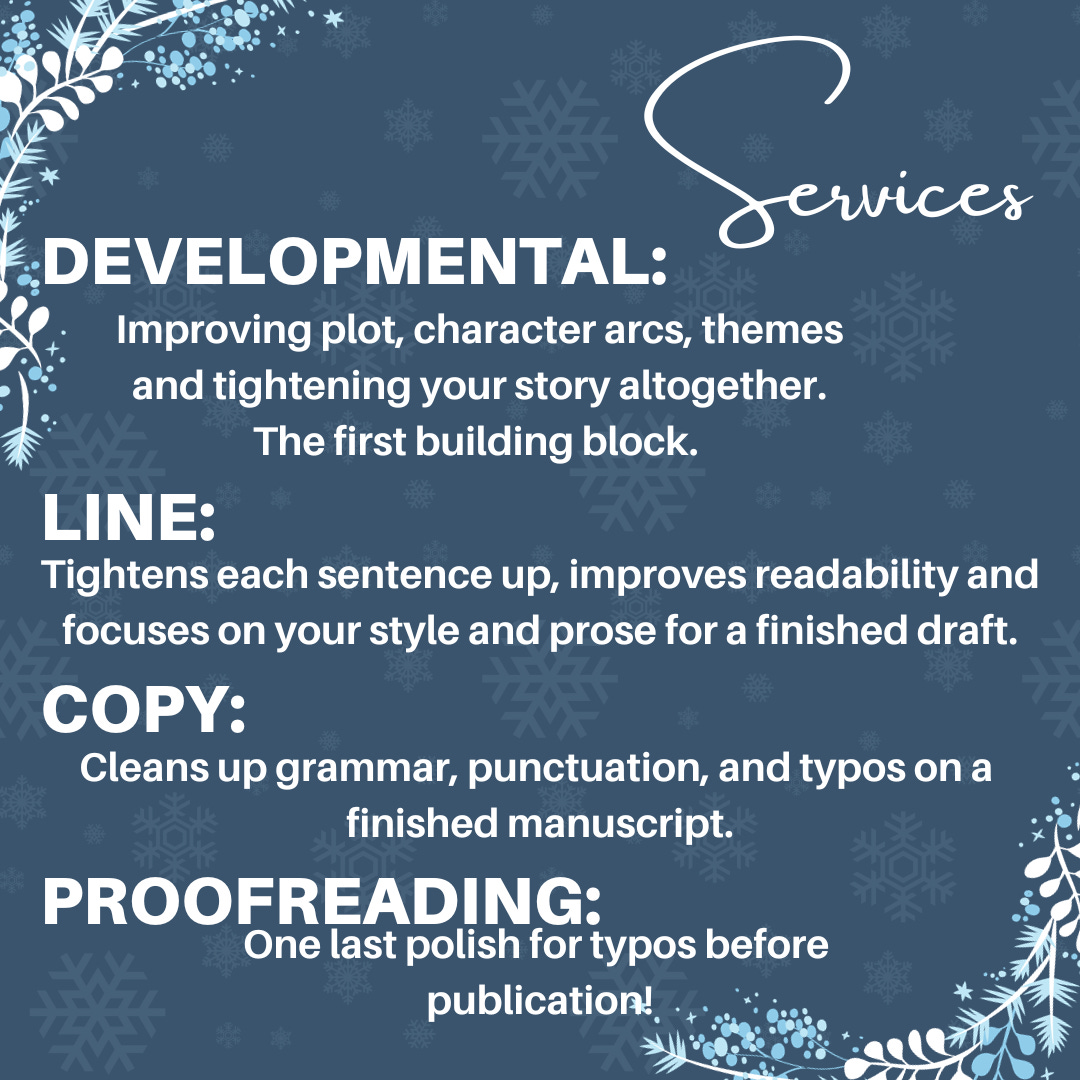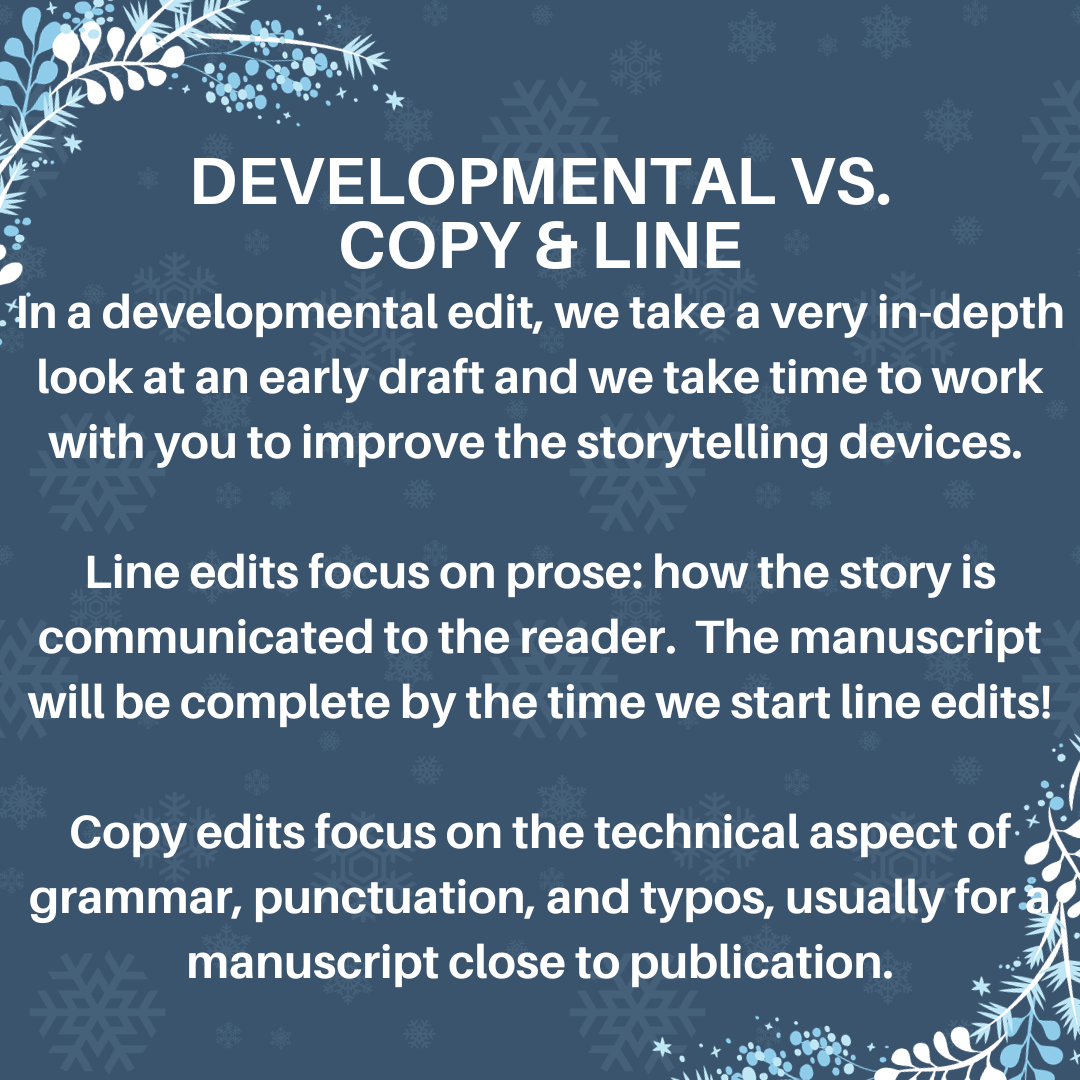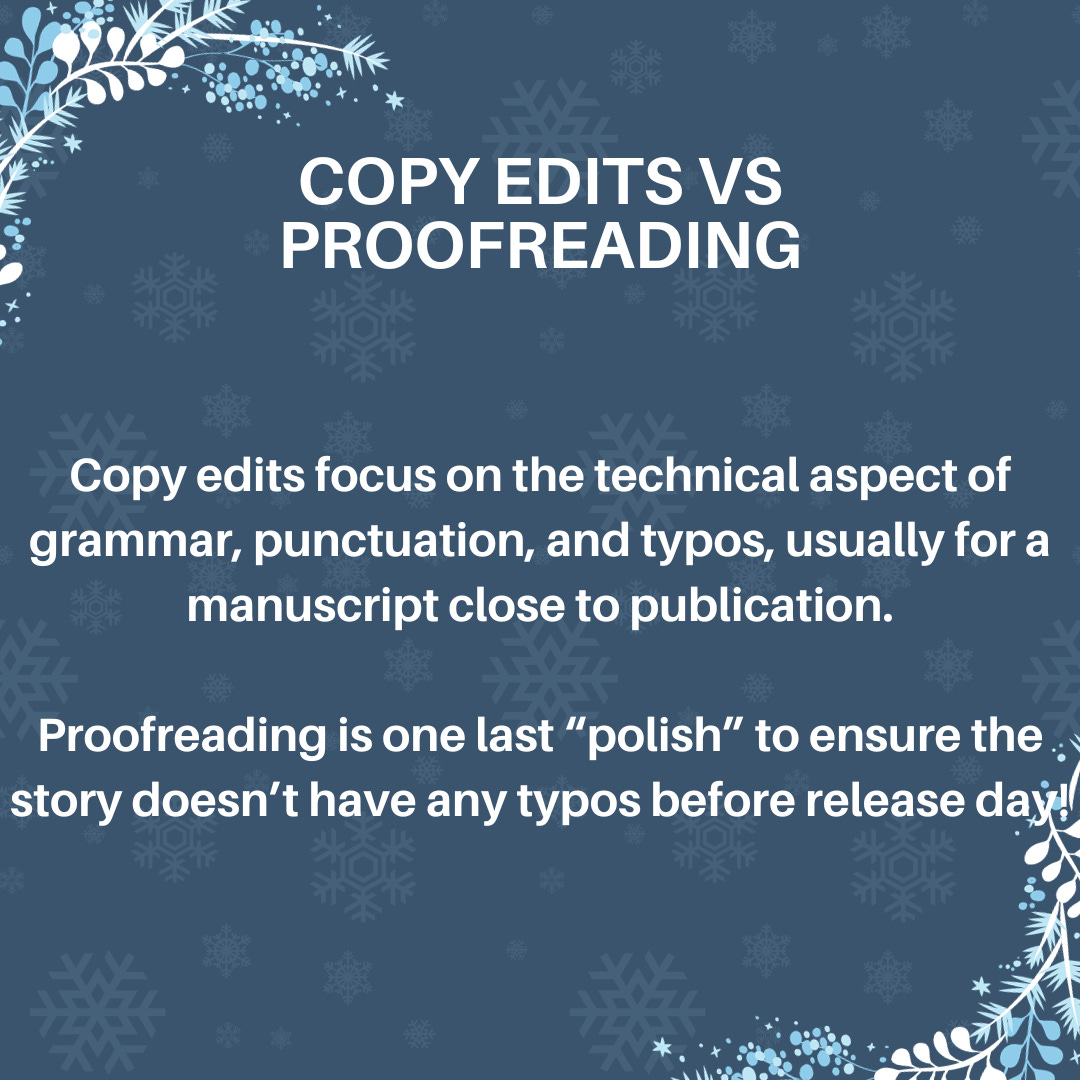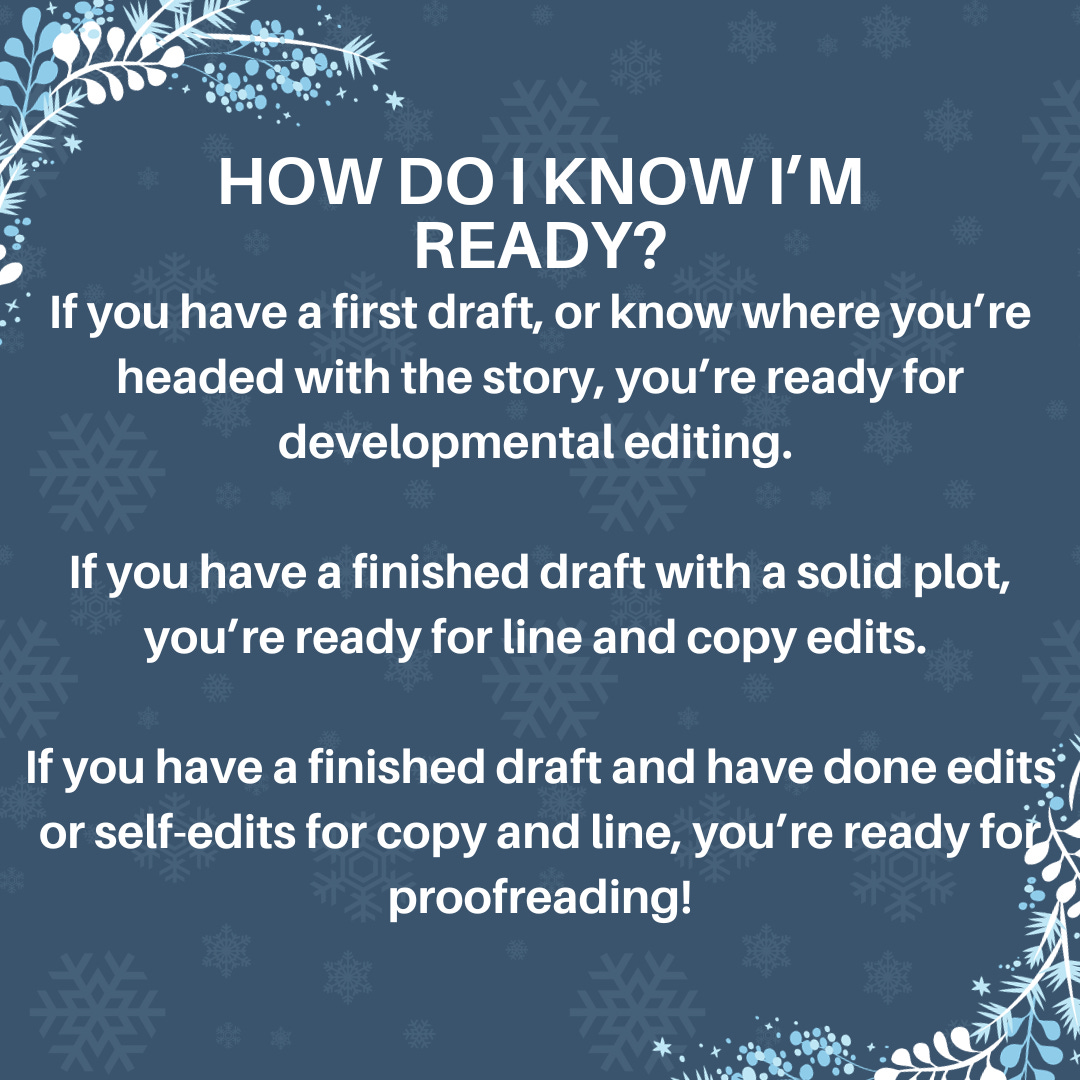I get two questions pretty often as a freelance editor: What kind of editing should I get? How do I know when I’m ready to have a professional editor go through my manuscript?
So I decided to create some graphics that I hope will be helpful for somebody!
Commonly, there are four types of editing: Developmental (or Content), Line, Copy, and Proofreading.
Developmental editing is commonly done on an early draft. It’s focused on improving your plot, your character development, and overall, making sure your story is as tight as it can possibly be. Plug those plot holes!
Line editing looks at each sentence individually, making sure the prose packs a punch and is strong enough to keep readers moving forward. It focuses on your individual style and ensures excess phrases and “fillers” are removed.
Copy editing is the more technical side of things, where grammar rules will apply. It cleans up grammar, punctuation, and misspellings for a manuscript that is nearing completion.
Proofreading is one of the final steps before publication, and it ensures there are no stray typos that were missed in other rounds of editing.
So what’s the difference between all these editing forms?
TL;DR: Developmental editing is used to improve your storytelling devices.
Line editing is used to improve how the story is communicated to the reader.
Copy editing makes sure the reader isn’t distracted by grammar errors.
(And proofreading is one final pass to ensure stray typos or formatting issues haven’t occurred.)
But what about developmental or content editing versus manuscript critiques?
Essentially, a developmental editor is going to roll up their sleeves and get in the trenches with you to improve your story, whereas a manuscript critique will offer some developmental feedback but will not go in-depth.
Another important thing to note: proofreading does not take the place of copy editing! If you know you will need help with grammar, it’s best to seek out help for copy editing before proofreading. I’m a horsewoman, so I liken it to how someone cleans a pair of leather boots: you don’t put polish on a boot that’s muddy and messy. You clean up first, then polish. (Copy=clean up; Proofread=Polish!)
Does every author need every single stage of editing? In traditional publishing, it’s common to put the manuscript through every single stage (sometimes multiple times, depending on the manuscript’s needs). However, authors may utilize trusted beta readers to catch plot holes or character arc issues; more experienced writers will also know their strengths and weaknesses when it comes to prose and grammar, and may be able to complete self-edits. However, it’s worth adding that it’s easy to miss errors after you’ve read through your writing dozens of times! It never hurts to have an extra pair of eyes (or a few) on your manuscript. You’ve already put a lot of work into it, why not go the extra mile to ensure it’s all it can be for your readers?
Have questions? Let me know!














0 comments:
Post a Comment